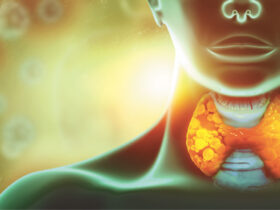By Adam Still, D.M.D., P.L.
 With this joyous time of the season, we all will inevitably indulge in some holiday fare that might not be the best for our teeth. Things like peanut brittle, candy canes, olive pits (hello martinis), or grandma’s burnt fruit cake, can all lead to some unsightly and often painful dental memories.
With this joyous time of the season, we all will inevitably indulge in some holiday fare that might not be the best for our teeth. Things like peanut brittle, candy canes, olive pits (hello martinis), or grandma’s burnt fruit cake, can all lead to some unsightly and often painful dental memories.
What should you do if you break a tooth? You should call the dentist! However, if the dentist isn’t in (middle of the night), you can find a few good products in the dental aisle of your pharmacy or grocery store. These at-home treatments are obviously only meant to be temporary until you can get to the dentist’s office for a thorough examination and a permanent procedure.
Dr. Adam Still of Smile Sarasota is one of the most skilled restorative dentists around. His ability to make your broken tooth look completely normal is a form of artwork that is often overlooked. Whether you choose to have a bonded material or a full veneer or crown, Dr. Still has state-of-the-art devices and techniques to make your teeth look and feel like nothing ever happened.
Prevalent causes of breaking teeth include microleakage and cracks that have derived over an extended period of time. In these situations, you can easily fracture your tooth on something as soft as angel food cake.
What is Microleakage?
Microleakage happens when the filling material begins to pull away from the tooth because the filling is disintegrating, or the tooth structure is breaking down. The crumbling of fillings can happen with resin (tooth colored), but typically dental professionals see the vast majority of microleakage in amalgam restorations. Amalgam is the metallic or “silver” version of dental fillings, which are made up of silver, tin, mercury, and copper. Characteristically, an amalgam restoration will last approximately 15 years depending on the size of the filling and the tooth’s healthy structure.
Cracked Teeth
Cracked teeth can be rather painful and particularly sensitive. When a tooth is cracked or chipped, the sensitive layer of your tooth is exposed, causing you to feel pain and sensitivity.
Sometimes cracks themselves are not painful, but the tooth becomes symptomatic after a large piece fractures off. It is always a good idea to be aware of cracks so they can be treated before there is pain. Waiting until cracks progress to the nerve canal can often lead to a root canal or the tooth may become non-restorable. Teeth that crack beyond the ability to be restored will need to be extracted and the tooth replacement options become much more costly and involved.
Treatment for Microleakage and Cracked Teeth
The good news is that microleakage and cracks are very easy for Dr. Still to repair. Often only the filling needs to be removed and replaced. However, if the situation is extensive, he may recommend an entirely new restorative treatment for you, whether that’s a crown, inlay, onlay or implant depends on the depth of damage your tooth has incurred.
It’s critical to get your teeth professionally cleaned and have your dentist examine your teeth and x-rays to check for fractures and microleakage. Dr. Still takes the time to show his patients the pictures from an intraoral camera, so that you can see the damaged area for yourself, and a treatment plan will be prepared for your specific needs.
The sooner you get any fractures or microleakage taken care of, the fewer chances you have of developing abscesses, periodontal disease, and bone infections.
Rest assured, if you have concerns about old fillings, chipped teeth, or just want to refresh your smile, look no further than the most innovative office in the greater Sarasota area—Smile Sarasota invests in the most up-to-date techniques and devices to make your smile and your experience the best it can possibly be.
Smile Sarasota provides the highest-quality services for restoring mouths that have been damaged by dental disease, injury and common problems that require cosmetic dentistry. Their primary goal for patients is to achieve and maintain optimum oral health through advances in techniques, technologies, and by keeping their scheduled dental exams.
Adam Still, D.M.D., P.L.
Dr. Adam Still was born and raised in the State of Washington. He received his undergraduate degree in Chemistry from the University of Washington in Seattle. Dr. Still moved to Boston where he received his Doctorate from Boston University School of Dental Medicine. He remains committed to ongoing education and staying up-to-date on all the best practices of dental care. Dr. Still has trained at both the Dawson and Spear Academies for advanced training and is a member of the American Dental Association, Florida Dental Association, and West Coast Dental Association.
To find out more, or to schedule your appointment, please call (941) 957-3311, or visit smilesarasota.com
Smile Sarasota







